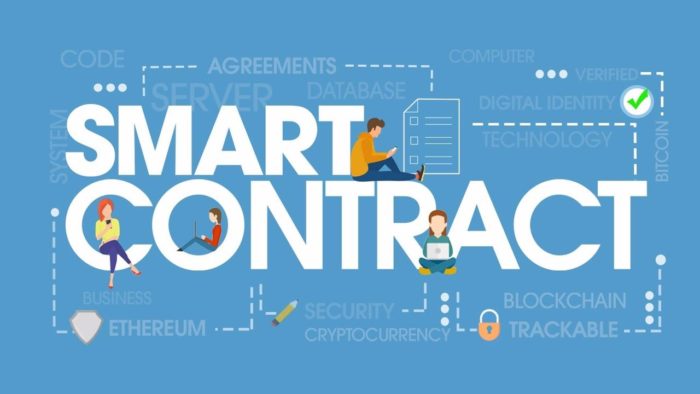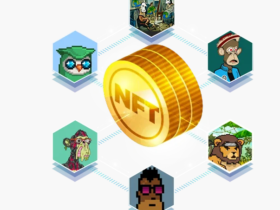Smart contracts are the primary component that interacts with the blockchain in bringing about action. A smart contract that performs such a vital role also controls the flow of funds.
That makes them the ideal target for hackers to hunt for flaws. Thus, a smart contract code with bugs becomes the epicenter of hacks to steal a wholesome amount.
This arises the need to have the knowledge to smartly deal with the development and security of smart contracts. This blog serves the same purpose of explaining the pointers to consider during smart contract development while ensuring its security simultaneously.
Let’s get into the core aspect of the blog in detail.
Correlating Blockchain And Smart Contracts
Blockchain is a public database where transactions are recorded in the distributed ledger and visible to anyone. So, how are smart contracts related to it?
A smart contract contains written lines of codes that self-execute the instruction given in it. It checks whether the condition between the sender and receiver matches the logic given in it and then allows the transaction to proceed.
This is how transactions are initiated and recorded in the network without the involvement of any middlemen.
Smart Contracts – How Are They Better?
- Smart contracts perform autonomously without involving middlemen theory cutting down the operational costs.
- Being able to perform automatically, the transactions are processed quickly, provided the conditions are met.
- Because of the accuracy and efficiency offered by smart contracts, they are widely adopted across different niches, such as healthcare, real estate, supply chain management, etc.
Particularities To Be Covered In Smart Contract Development
Doubtless that among the different kinds of blockchain, the most popular are Bitcoin and Ethereum. Of which many Dapps run on Ethereum blockchain using smart contracts.
The smart contracts are written using the Solidity programming language and are made to run on the Ethereum virtual machine (EVM).
Let’s now look into what you need to look after while creating smart contracts.
Ownership: A creator of the contract doesn’t imply the ownership rights to themself. By default, the interaction with the contract will be the same for the creator as with anyone else.
Why because smart contracts have the function wherein the owner’s address is included. Only those addresses will have the rights to perform the owner role and have greater accessibility on the contract.
The common way of adding ownership to the contract is by importing a library. However, the ownership is transferred between different parties during the trade exchange.
Token Standards: Talking of Ethereum blockchain, it uses ERC token standards that are of several types. The role of the token standards is that it dictates the terms of the functioning of the contract.
Say, for example, ERC-20 token standards are fungible in nature. The tokens created using ERC-20 hold the same value and can be interchanged one with the other. Mostly crypto tokens on the Ethereum blockchain are created based on this standard.
ERC-721 is another common standard which is non-fungible, and each token is tied with a unique value. That makes them non-interchangeable as there is a special significance for each one of them.
Handling limitations: There are certain limitations that have to be understood while dealing with the development of contracts.
Smart contracts are bound to operate only within the digital world. And the digitally operable blockchain is decentralized and still in the nascent stage that is not completely regulated.
The conditions are executed mostly in an “if-else” form, which doesn’t provide space or scope for highly sophisticated variations.
Common Issues Observed During Smart Contract Auditing
Smart contracts have to be strongly secure for the reason that they are immutable, completely transparent and deal with huge funds. However, a small bug makes it easy for hackers to pull down its value completely.
Herein auditing by renowned firms like QuillAudits helps to catch the errors which are otherwise unnoticed during the development. Smart contract auditing thoroughly analyses the smart contract code involving different phases.
Manual and automated testing ensures smart contract security, during which the errors are rightly caught and rectified. Let’s dig out some of the common security vulnerabilities covered in the auditing.
Reentrancy
Reentrancy is a condition where the program execution is interrupted and made to run again from the specific point.
Smart contracts make an external call in this case which, if done wrongly, would call an untrusted contract and perform the reentrancy attack on the original contract.
Integer overflows and underflows
If not handled properly, the arithmetics in smart contracts will lead to this type of vulnerability. Overflow is a condition where the output is larger than that of the allowed value, and an underflow condition is where the output is smaller than the output value.
Many developers ignore this check as they require high gas usage. But security audit firms pay attention to all of it.
Oracle manipulation
Smart contracts are coded to rely on an external website to fetch real-world information and act based on it. Those external sites are Oracles, and if there is any misleading information, the functioning of the smart contract collapses.
That is why the use of authenticated Oracles is suggestible.
Concluding note
This is just an introductory guide to Smart contracts and there is a lot more to it. For more references and clarifications on the Smart contract, visit the official QuillAudits website.








Leave a Reply